An optical cavity amplifies the signatures of specific nuclei in an atomic lattice.
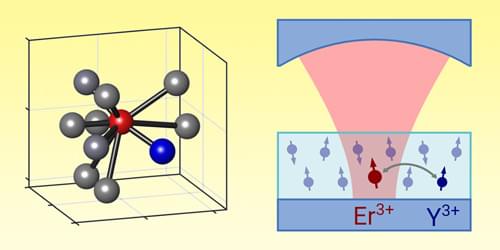

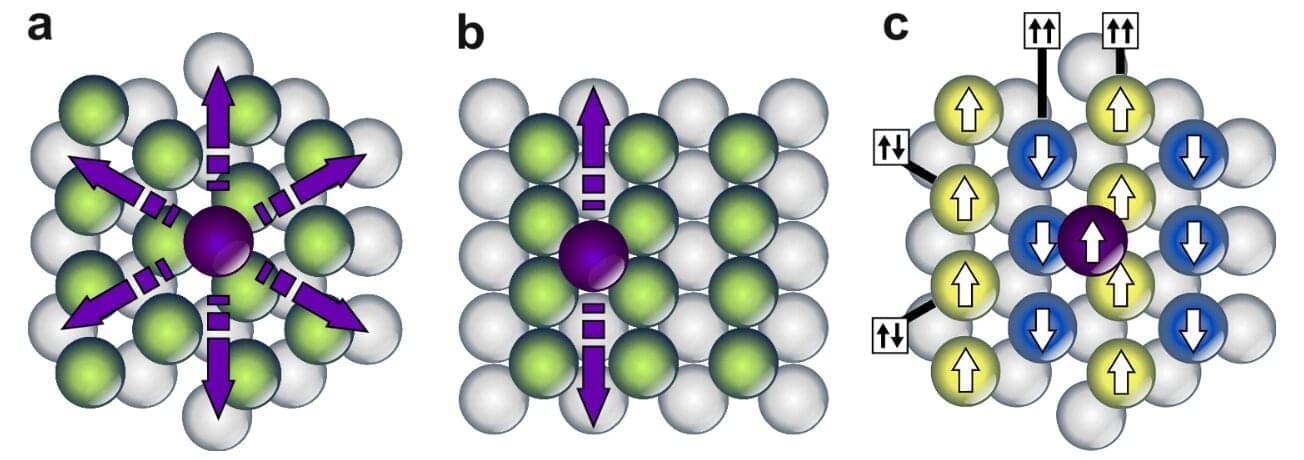
Adatoms are single atoms that get adsorbed onto the surface of a solid material and are known to hop randomly from one spot to another. In a recent study published in Nature Communications, a group of scientists from Germany demonstrated that single atoms can be steered in a chosen direction at near absolute zero temperatures (4 Kelvin), provided the surface being used is magnetic in nature—a discovery that can open up new possibilities for precise control of atomic motion, a sought-after ability in the field of nanotechnology, data storage and functional materials.
The researchers placed individual cobalt, rhodium, and iridium atoms on a 1-atom-thick manganese surface to create a magnetically well-defined surface and studied the migration behavior of adatoms using a scanning tunneling microscope (STM) at a temperature of 4 K.
According to established findings from nonmagnetic surfaces, atomic movement is usually governed by surface symmetry. In a hexagonal manganese monolayer like the one used in the study, atoms would be expected to migrate randomly in any of six directions. Yet in a surprising twist, researchers found that when a short, localized voltage pulse from the STM was applied, the atoms consistently moved in just one direction.
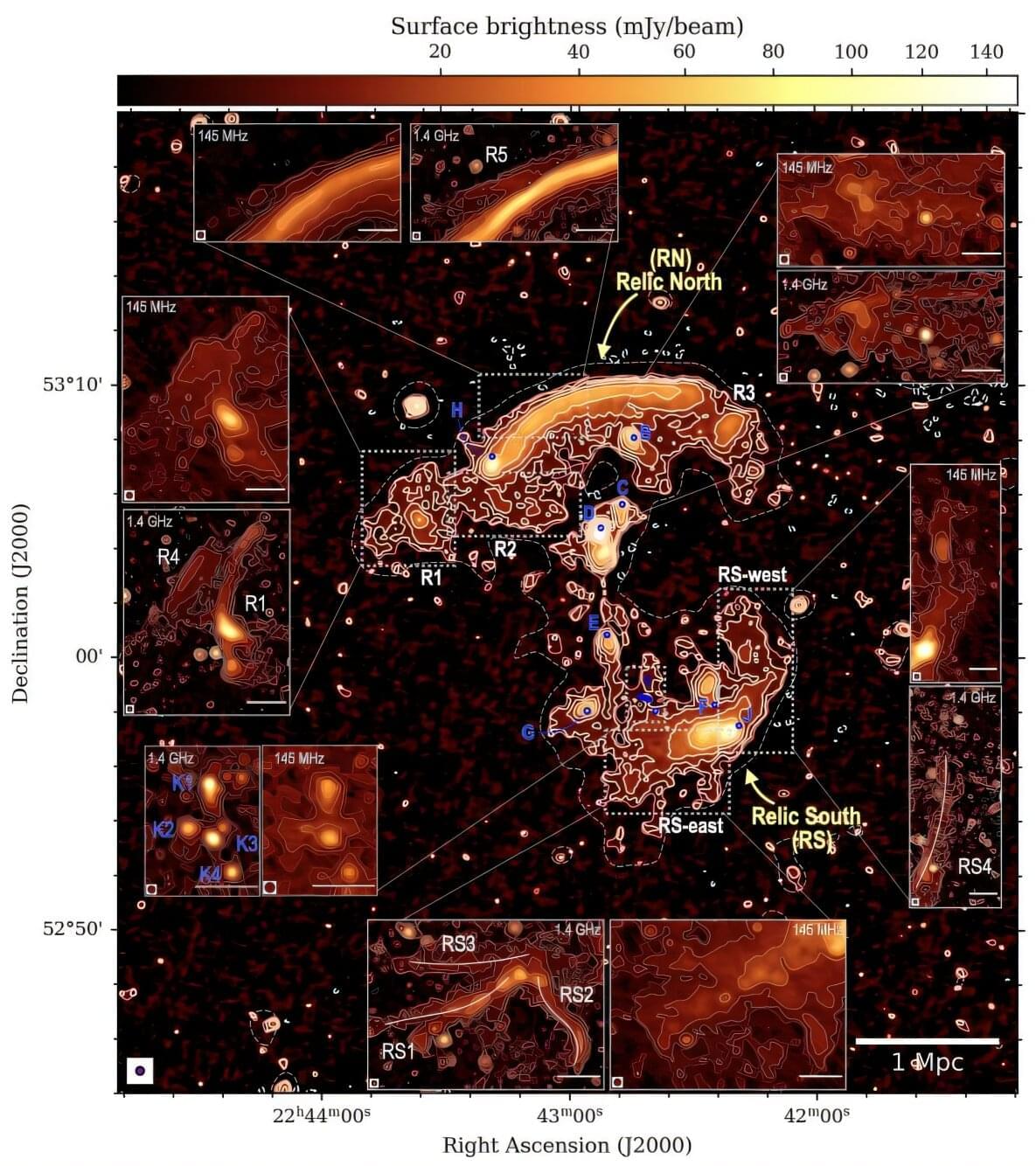
Using the Low Frequency Array (LOFAR), European astronomers have investigated a galaxy cluster designated CIZA J2242.8+5301, dubbed the Sausage cluster. The observations conducted at very low radio frequencies provide more insights into the properties of radio relics in this cluster. The new findings are presented in a research paper published May 29 on the arXiv preprint server.
Galaxy clusters consist of up to thousands of galaxies bound together by gravity. They are the largest known gravitationally-bound structures in the universe, and therefore serve as excellent laboratories for studying galaxy evolution and cosmology. Observations show that galaxy clusters generally form as a result of mergers and grow by accreting sub-clusters.
CIZA J2242.8+5301 is a well-studied merging galaxy cluster at a redshift of 0.192. It contains prominent double radio relics (diffuse, elongated radio sources of synchrotron origin) and other diffuse radio sources. CIZA J2242.8+5301 was nicknamed the Sausage cluster due to the distinctive morphology of its northern relic.

A team of scientists from the SETI Institute and the University of California at Davis has documented, for the first time, humpback whales producing large bubble rings, like a human smoker blowing smoke rings, during friendly interactions with humans. This previously little-studied behavior may represent play or communication.
The paper is published in the journal Marine Mammal Science.
Humpback whales are already known for using bubbles to corral prey and creating bubble trails and bursts when competing to escort a female whale. These new observations show humpback whales producing bubble rings during friendly encounters with humans. This finding contributes to the WhaleSETI team’s broader goal of studying non-human intelligence to aid in the search for extraterrestrial intelligence.

In the name of open science, the multinational scientific collaboration COSMOS on Thursday released the data behind the largest map of the universe. Called the COSMOS-Web field, the project, built with data collected by the James Webb Space Telescope (JWST), consists of all the imaging and a catalog of nearly 800,000 galaxies spanning nearly all of cosmic time. And it’s been challenging existing notions of the infant universe.
“Our goal was to construct this deep field of space on a physical scale that far exceeded anything that had been done before,” said UC Santa Barbara physics professor Caitlin Casey, who co-leads the COSMOS-Web collaboration alongside Jeyhan Kartaltepe of the Rochester Institute of Technology.
“If you had a printout of the Hubble Ultra Deep Field on a standard piece of paper,” she said, referring to the iconic view of nearly 10,000 galaxies released by NASA in 2004, “our image would be slightly larger than a 13-foot by 13-foot-wide mural, at the same depth. So it’s really strikingly large.”
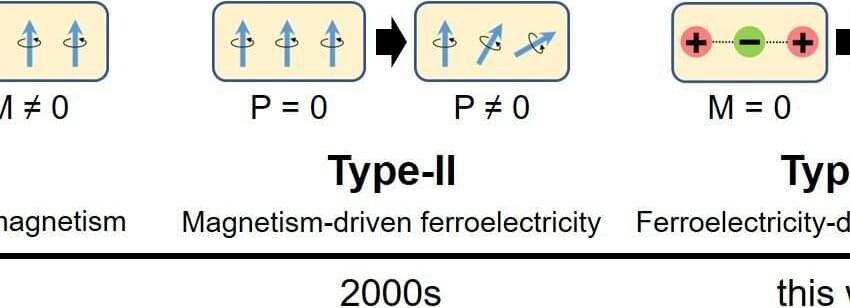
Multiferroics are materials that exhibit more than one ferroic property, typically ferroelectricity (i.e., a spontaneous electric polarization that can be reversed by electric fields) and ferromagnetism (i.e., the spontaneous magnetic ordering of electron spins). These materials have proved promising for the development of various new technologies, including spintronics, devices that exploit the spin of electrons to process and store information.
So far, physicists and material scientists have uncovered two distinct types of multiferroics, dubbed Type-I and Type-II multiferroics. In Type-I multiferroics, ferroelectricity and magnetism arise independently from distinct physical mechanisms, while in Type-II multiferroics, ferroelectricity is driven by magnetic ordering.
Researchers at Nanjing University of Science and Technology recently predicted the existence of a third type of multiferroics, referred to as Type-III multiferroics, in which magnetism is driven by ferroelectricity. Their paper, published in Physical Review Letters, could inspire future efforts aimed at identifying materials with the characteristics they described, which could be highly advantageous for the advancement of spintronics as well as other memory and information processing systems.

Researchers at the University of Tartu Institute of Computer Science introduce a novel approach to reducing electronic waste and advancing sustainable data processing: turning old smartphones into tiny data centers.
Each year, more than 1.2 billion smartphones are produced globally. The production of electronic devices is not only energy-intensive but also consumes valuable natural resources. Additionally, the manufacturing and delivery processes release a significant amount of CO₂ into the atmosphere. Meanwhile, devices are aging faster than ever—users replace their still-functional phones on average every 2 to 3 years. At best, old devices are recycled; at worst, they end up in landfills.
Although the most sustainable solution would be to change consumer behavior and consider more carefully whether every new model truly requires replacing the old one, this is easier said than done. Rapid technological development quickly renders older devices obsolete. Therefore, alternative solutions are needed—such as extending the lifespan of devices by giving them an entirely new purpose.

Quantum materials exhibit remarkable emergent properties when they are excited by external sources. However, these excited states decay rapidly once the excitation is removed, limiting their practical applications.
A team of researchers from Harvard University and the Paul Scherrer Institute PSI have now demonstrated an approach to stabilize these fleeting states and probe their quantum behavior using bright X-ray flashes from the X-ray free electron laser SwissFEL at PSI. The findings are published in the journal Nature Materials.
Some materials exhibit fascinating quantum properties that can lead to transformative technologies, from lossless electronics to high-capacity batteries. However, when these materials are in their natural state, these properties remain hidden, and scientists need to gently ask for them to pop up.
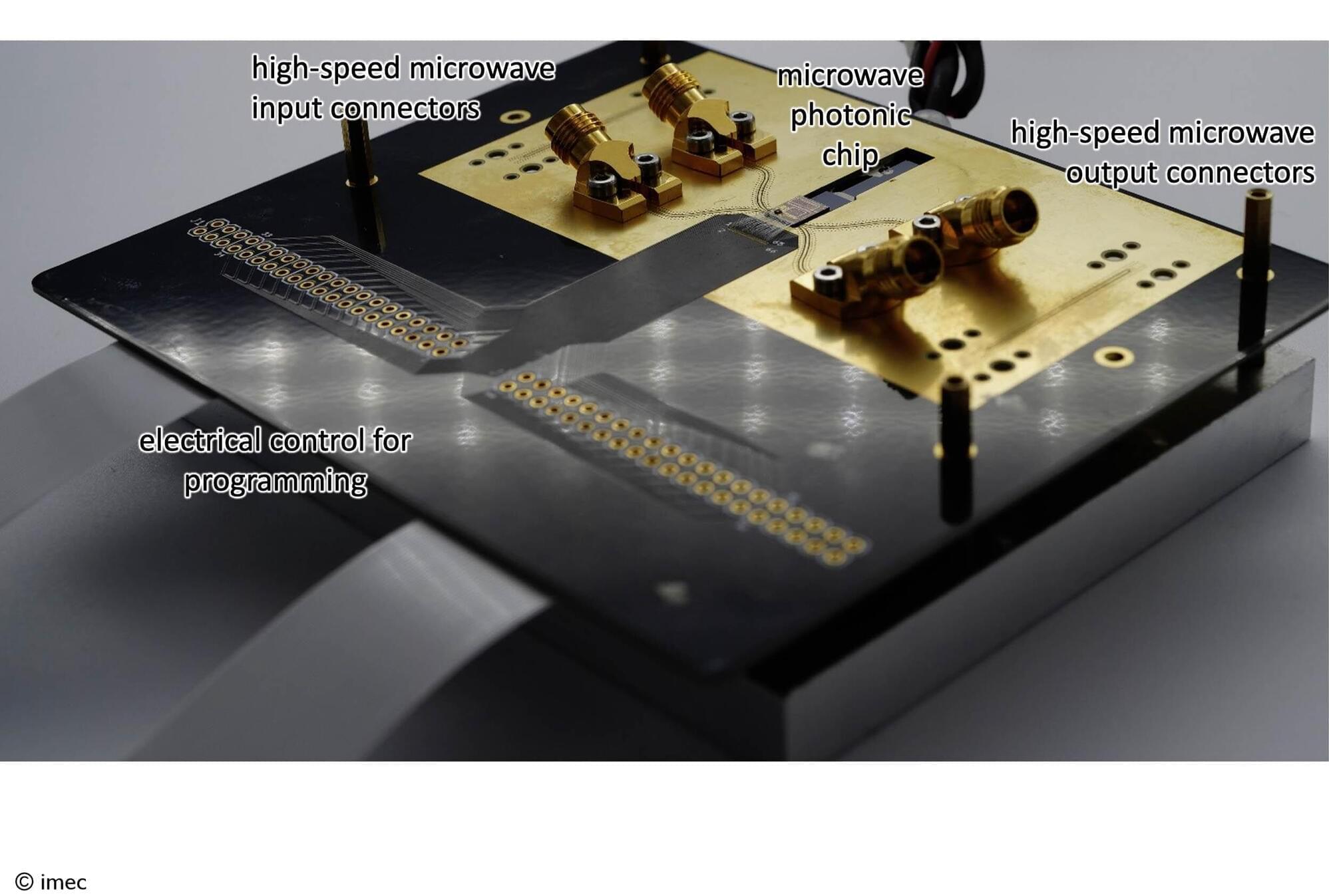
Researchers have published the demonstration of a fully-integrated single-chip microwave photonics system, combining optical and microwave signal processing on a single silicon chip.
The chip integrates high-speed modulators, optical filters, photodetectors, as well as transfer-printed lasers, making it a compact, self-contained and programmable solution for high-frequency signal processing.
This breakthrough can replace bulky and power-hungry components, enabling faster wireless networks, low-cost microwave sensing, and scalable deployment in applications like 5G/6G, satellite communications, and radar systems.

MIT physicists have demonstrated a new form of magnetism that could one day be harnessed to build faster, denser, and less power-hungry “spintronic” memory chips.
The new magnetic state is a mash-up of two main forms of magnetism: the ferromagnetism of everyday fridge magnets and compass needles, and antiferromagnetism, in which materials have magnetic properties at the microscale yet are not macroscopically magnetized.
Now, the MIT team has demonstrated a new form of magnetism, termed “p-wave magnetism.”